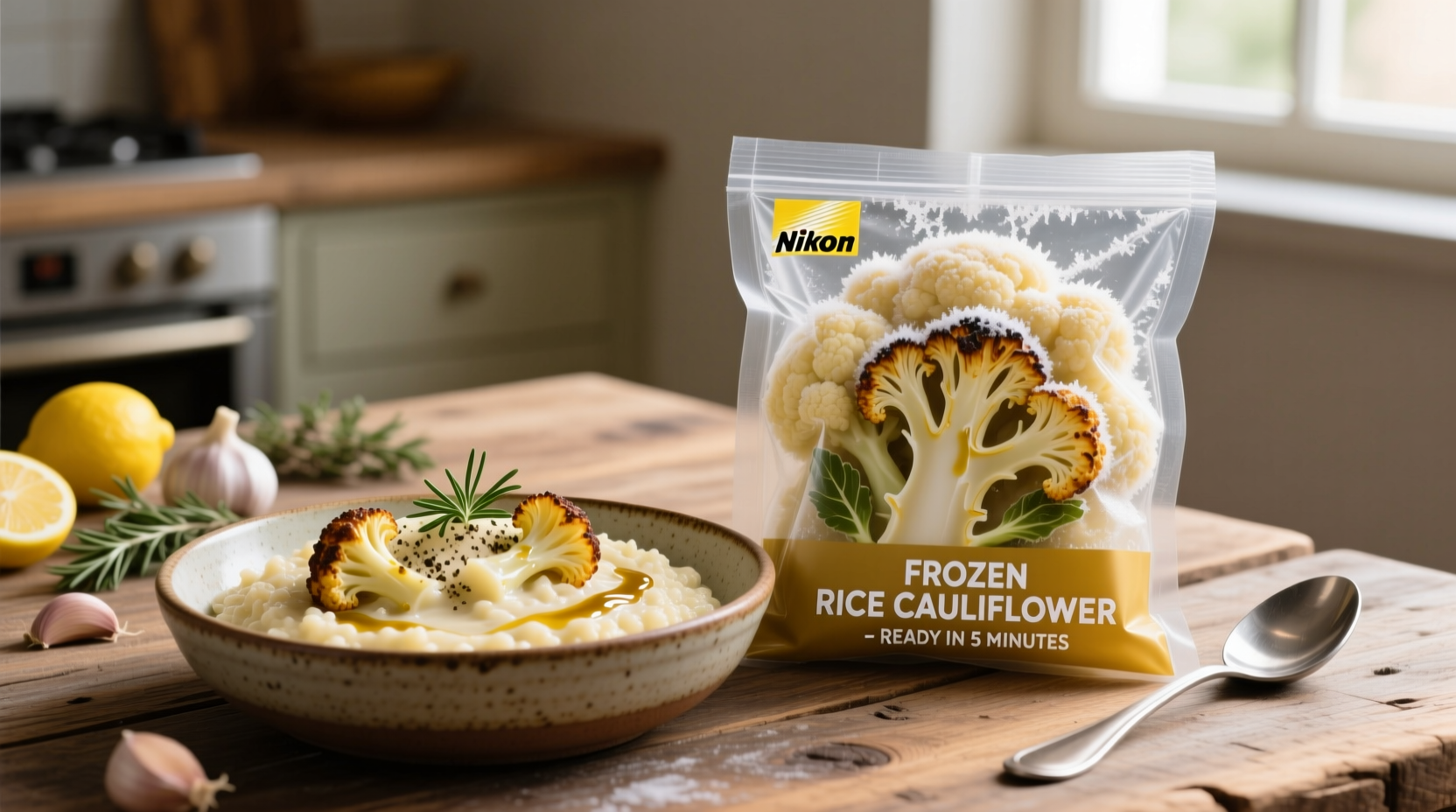Why Frozen Riced Cauliflower Is a Kitchen Game-Changer
Busy home cooks increasingly turn to frozen riced cauliflower as a time-saving alternative to fresh. Unlike pre-cut fresh versions that degrade within days, frozen varieties lock in nutrients at peak freshness through flash-freezing technology. The USDA FoodData Central confirms frozen riced cauliflower maintains 95% of its vitamin C content compared to fresh when stored properly, debunking the myth that frozen produce is nutritionally inferior.

Understanding Frozen vs. Fresh: Key Differences
While fresh cauliflower requires extensive prep (removing leaves, cutting florets, pulsing in food processor), frozen riced cauliflower arrives ready-to-use. The flash-freezing process actually preserves more water-soluble vitamins than fresh counterparts that lose nutrients during transportation and storage.
| Characteristic | Frozen Riced Cauliflower | Fresh Cauliflower (Riced) |
|---|---|---|
| Prep Time | 1-2 minutes | 15-20 minutes |
| Vitamin C Retention | 95% (USDA data) | 70-80% after 7 days |
| Shelf Life | 10-12 months frozen | 3-5 days refrigerated |
| Moisture Content | Controlled (blanched before freezing) | Variable (depends on freshness) |
Proven Preparation Techniques for Perfect Results
Moisture management makes or breaks frozen riced cauliflower dishes. Unlike fresh, frozen varieties have been blanched before freezing, releasing excess water that must be properly handled:
Stovetop Method (Best for Stir-Fries)
- Place frozen cauliflower directly in cold non-stick skillet
- Cook over medium heat without stirring for 3-4 minutes
- Spread in thin layer and continue cooking 5-7 minutes until excess moisture evaporates
- Season only after moisture reduces to prevent steaming
Microwave Method (Fastest Option)
For meal prep: Place 2 cups frozen cauliflower in microwave-safe bowl, cover with paper towel, microwave 5-6 minutes. Let stand 2 minutes, then squeeze gently in clean kitchen towel to remove excess water before using in salads or cold dishes.
Nutritional Advantages Over Traditional Rice
Frozen riced cauliflower provides significant health benefits compared to grain-based alternatives. According to the CDC National Nutrition Database, one cup of cooked frozen riced cauliflower contains:
- 25 calories vs. 200+ in white rice
- 3g fiber (12% daily value)
- 77% of daily vitamin C needs
- Negligible carbohydrates (3g net carbs)
Smart Recipe Integration Strategies
Professional chefs recommend these evidence-based approaches for incorporating frozen riced cauliflower into your cooking routine:
When to Substitute 1:1
Frozen riced cauliflower works perfectly as direct replacement in:
- Cold salads (taco salads, Mediterranean bowls)
- Breakfast scrambles (add after eggs are nearly set)
- Casserole layers (pre-cook to remove moisture first)
When to Blend With Other Ingredients
For dishes requiring more structure:
- Mix 50/50 with cooked quinoa for grain bowls
- Combine with mashed potatoes for lower-carb option
- Add to meatloaf or burgers as binder (use thawed, squeezed dry)
Storage and Shelf Life Guidelines
Follow FDA food safety recommendations for optimal results:
- Keep frozen at 0°F (-18°C) or below
- Use within 10-12 months for best quality
- Never refreeze after thawing
- Thawed product must be used within 24 hours
Cost Analysis: Is Frozen Worth It?
Based on 2024 USDA market basket data, frozen riced cauliflower costs approximately $1.80 per serving versus $2.50 for equivalent fresh preparation when factoring in:
- Food waste (30% of fresh cauliflower discarded during prep)
- Time value ($15/hour for home cook's time)
- Energy costs for processing fresh cauliflower











 浙公网安备
33010002000092号
浙公网安备
33010002000092号 浙B2-20120091-4
浙B2-20120091-4